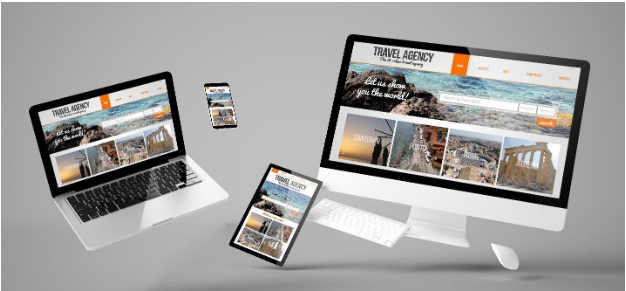Times Are Changing: How to Design a Website With DIY Templates


The days when a web professional was absolutely required in order to build a functional website are long gone. In web design as well as in many other areas, it’s all about DIY solutions.
The good news is, using DIY templates to design and build your website has never been easier. In fact, you don’t even need any experience in web design!
Let’s take a look at why you might want to use DIY templates, and how to do so.
Why DIY?
The cost to have a website designed and built for you varies widely depending on the type of site you need, and the features involved. But sources suggest that pricing can run between one hundred and five hundred dollars on average, with prices going up exponentially for custom sites with lots of unique features.
On the other hand, if you do a quick search for website builders, most of the results on the first page will be for free, DIY, template-heavy building sites.
Of course, you can also opt for a mix of the two, choosing custom templates that cost a lesser amount and putting it together yourself.
The main point is that it’s easier, cheaper, and faster than ever before to design a website yourself. And that includes every aspect of DIY website design, from the overall layout to color palettes, to website logos like these and other visual elements.
How to Design Your Site
The exact how-to of designing a site with DIY templates depends on the building site you choose. Sites like WordPress provide you with a host of design tools and templates that you can choose from and adjust to fit your needs.
Many other sites, like Theme Forest, offer unique templates and layouts that are designed for your building site of choice. Some of them, like those available on WP’s site, are free, and others require a fee, usually a nominal amount.
So the first step to designing your site is to choose your building or hosting site. It’s recommended to look at example sites that were put together using templates provided by the building site, in order to get a good feel for what is offered and whether or not it will fit the needs of your own website.
Here are some recommended options:
- Squarespace
- WordPress
- Duda
- Weebly
I’m partial to WordPress, though that’s partly due to the fact that it’s the building site I’m most familiar with. All of these build sites are thick with options, and their DIY templates are generally very customizable. Many of them have free services, as well as paid.
Once you’ve decided on your site, work your way through this DIY Website Design Checklist.
DIY Website Design Checklist
- Secure your web domain. You can often do this through your website builder, or you may choose to use a site like namecheap.com.
- Make a list of necessary features for each page of your site, ie. a header image, navigation bar, etc.
- Decide what type of layout best suits the type of website you are designing. For instance, if you’re creating an online portfolio, you want a layout that allows for a heavy emphasis on images.
- Search through the DIY templates available for your building site of choice. Most have customizable searches, so you can look specifically for a type of template, such as “portfolio” or “free.”
- Once you have a list of your top choices, create a mock-up version of a page of your website so you can get an idea of what the finished product will look like. This will make it easier to decide on your templates.
- Adjust color palette and typefaces to fit in with your branding.
- Include your logo on at least your main page, if not all of them. This helps with branding efforts and gives your site a professional appearance.
- Modify your template as needed to include the “necessary features” you’ve already listed.
Suggestions for necessary features include:
- Navigation bar
- Header image
- SEO-rich content in an appealing layout
- A space for your logo
- Videos and images
- “Contact us” and “About us” sections or pages
- Links to social media profiles
- Footer information, such as copyright info
Not all templates will have what you need, but many can be adjusted. Keep an eye out for your “needs list” items, but don’t automatically discount a template that might appear, at first glance, to be missing a vital component.
DIY Vs. Professional Web Design
One of the great things about designing a website with DIY templates is how many options it gives you. Rather than just sticking with a premade template, which may or may not fit in with your branding and website needs, adjusting and tweaking colors, fonts, layout, and more all gives you a leg up on creating a site that personifies your brand.
And it does that at a much lower price point than hiring a professional web designer.
Of course, there may come a time when you need a professional hand involved in your web design. There’s no rule that you only have to do one or the other; combining your own DIY efforts with the occasional help of a pro could actually be the best solution.
Whichever you end up choosing, this is definitely the optimum time to take a closer look at designing your site with DIY templates.
Author Bio
Andrew Hoffman is a creative freelance writer who specializes in topics related to small business and startups, digital marketing and branding.







